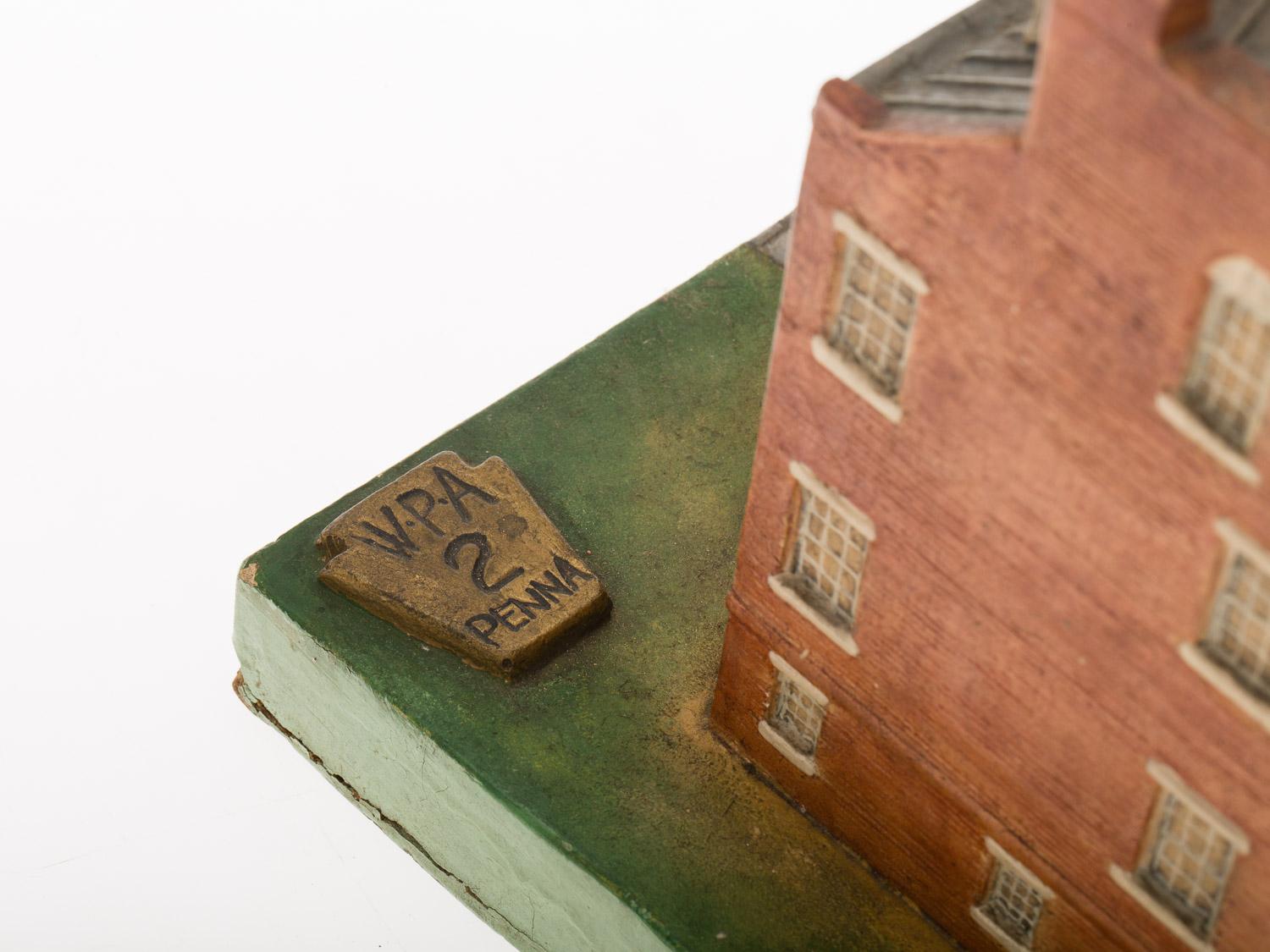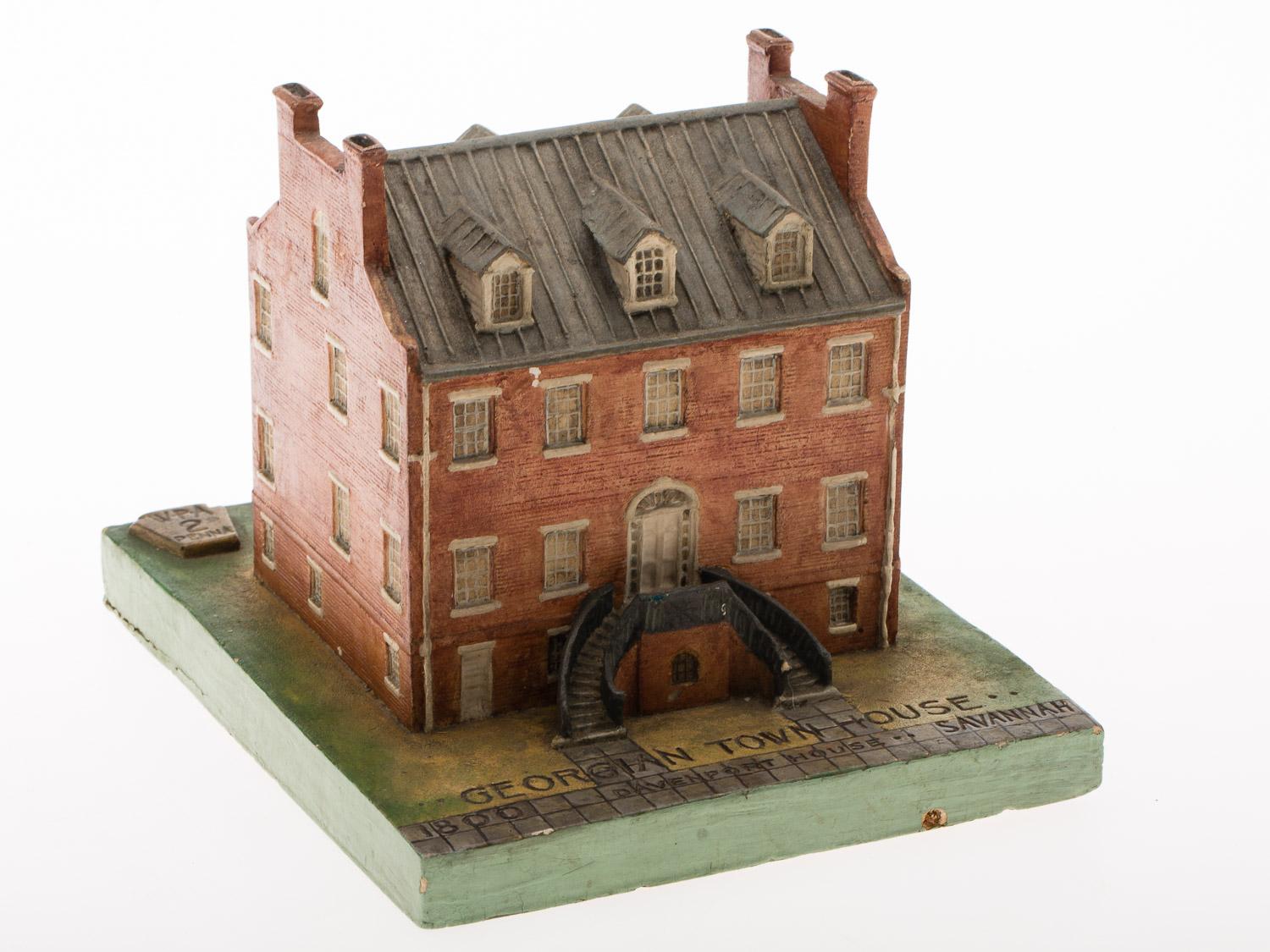
HSF Board member, Jeff Kole, recently donated a very special gift to the organization – a plaster replica of our flagship property, the Davenport House, dating back to the late 1930s. This model was created as part of the Works Progress Administration (WPA), one of Franklin D. Roosevelt’s New Deal era programs created to put people back to work during the Great Depression.
Mr. Kole purchased the model through Alex Raskin’s antiques in Savannah, who acquired it from a New York City auction house. While there is no prior ownership information available, its origins are well documented.
The Federal WPA program was started in 1935 to put Americans back to work during a time they might have otherwise suffered long periods of unemployment – including artists, musicians, photographers, writers, architects, and engineers. The WPA employed millions of people in the nine years it was in existence, including well known artists. It produced plays by Orson Wells, funded murals by the likes of Diego Rivera, and catalogued photo and oral history documentaries by Dorothea Lange. In much larger numbers it employed millions of average Americans who constructed public buildings, monuments, bridges, and other large public works projects.
This model is one of hundreds commissioned as part of the Museum Extension Project (MEP) of Pennsylvania, which was begun in 1935 as part of the Pennsylvania WPA. (Each state had its own branch of the Federal program). The concept behind the MEP was to create a traveling museum of sorts….a catalogue of “visual education materials” that could be borrowed and shipped around the state to various schools for use in the classroom. Materials in the catalogue included dioramas, maps, games, flash cards, native handcraft designs, flags of the nations, as well as those architectural models. Similar plaster models of other notable landmarks were also produced including Independence Hall and the Betsy Ross House in Philadelphia, the Glessner House in Chicago, the Cliff Dwellings in central Arizona, and even Petit Trianon at Versailles in France. This list not only speaks to the wide breadth of architectural styles illustrated in the catalogue, but it is a testament to the cultural and architectural significance of the Davenport House itself, to even be included on such a list.
HSF is very grateful to Mr. Kole for his generous donation, which currently holds a place of distinction in the HSF boardroom, where it will remain on prominent display.
